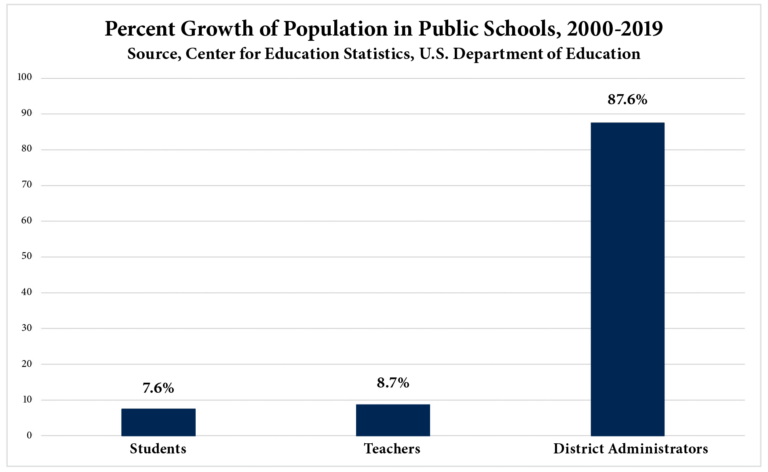District admin growth 10x greater than student, teacher growth
The number of district administrators in U.S. public schools has grown 87.6 percent between 2000 and 2019 compared to student growth at 7.6 percent and teacher growth at 8.7 percent.
The data from the Center for Education Statistics and the U.S. Department of Education was shared by Dr. Larry Arnn, president of Hillsdale College.
It illustrates the role public education plays in the prevailing administrative system, with the rapid and large growth of administrators resulting in removing “authority and money away from the schools where the students learn” and flowing it “toward the bureaucracy,” continues Dr. Arnn.
…[A]s the numbers show, the public education system works to the detriment of teachers and for the benefit of bureaucrats. The teachers unions themselves, some of the largest of the public employee unions, claim to be defending teachers and children. That cannot be more than half true, given that they are defending an administrative system that has grown by leaps and bounds while the number of teachers has grown very little.
Other federal data also confirm the growth in administrative staff far outpacing teacher hiring.
This isn’t to say, of course, that all administrators are bad, writes Ira Stoll for Education Next. “[S]urely there are cases in which hiring additional administrators at the school or district level have improved student outcomes. Without full-time administrators, compliance burdens fall more heavily on classroom teachers or risk going unmet.”
The data also doesn’t capture the growing administrative burdens on existing teaching staff. These burdens “represent real costs in terms of staff time, diminished instructional capacity, and endemic burnout in the teaching profession,” continues Stoll. “Special education teachers, for instance, spend more time each week on paperwork than they do on grading papers, communicating with parents, sharing expertise with colleagues, supervising paraprofessionals, and attending Individualized Education Plan meetings combined…”
When central bureaucrats and union officials call most of the shots, is it any wonder the top-down education bureaucracy has so many shortcomings?
